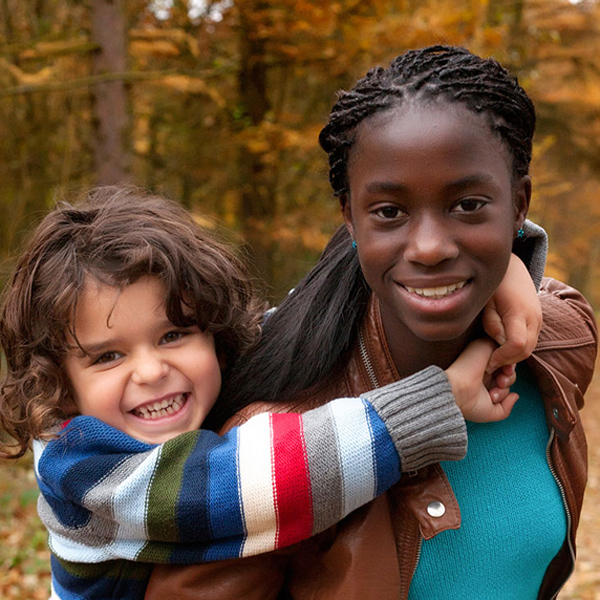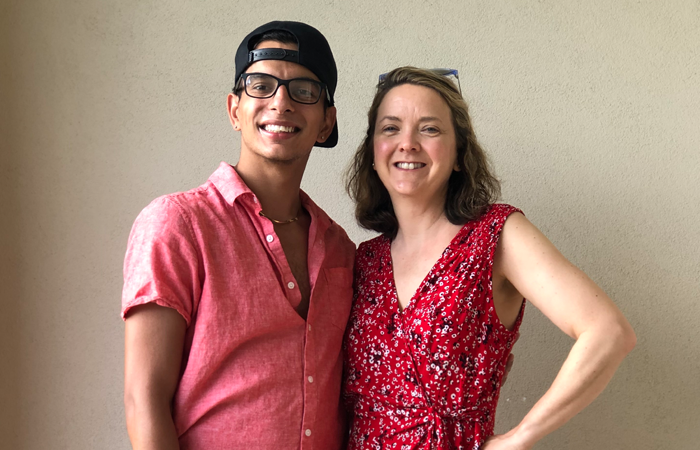When it comes to our families, there certainly is no “one size fits all.” In addition to families with children from various types of adoption — domestic or international, same race or transracial — many adoptees also have siblings who were either born to their parents, or who are from one or both of their parents’ previous relationship(s). These complex blended families may include children conceived through third party assistance, such as donor egg, donor sperm, donor embryo, or those born to a surrogate/gestational carrier.
Parents may wonder how their adopted children feel about their “blended” families as they enter adolescence. Does being adopted impact relationships with siblings? Does it matter who came first — the adoptee or the biological child?
Siblings Will Always Compare
If we remember our experiences growing up, we recall that siblings often make comparisons to each other. In blended families, an adopted teen might compare her story of joining the family with that of a sibling born to their parents. Regardless of order, if a teen worries that her sibling has greater “status” in the family because he or she is a biological child, that can compromise her sense of self-esteem and belonging. Does she think her birth sibling is favored? Does she think her birth sibling is more like their parents? Does she think her parents enjoy closer, easier relationships with their birth child(ren)?
Pat, 13, adopted domestically as an infant, was very different from his two older brothers, both born to their parents, and felt that his family did not understand how hard that was. His brothers were both athletically talented, just like their parents, and sports, especially football, were highly valued in his family. While Pat excelled at technology and computers, he could not be convinced that his accomplishments could compete with those of his brothers.
In some cases, a teen’s perception might be accurate, but only indirectly related to adoption, if at all. Even in biological families, parents sometimes find it easier to relate to one child than another, maybe because of shared interests, maybe because of temperament. However, while all parents must be careful about displays of favoritism, because of the hurt it can cause, parents in blended families, especially, need to send the message that they value each child’s unique history and qualities, and that differences are accepted and enrich the family.
Blending an Identity
Identity formation is the key task of adolescence, and this may be especially challenging for adoptees. Teens figure out who they are by deciding how they are like and unlike their parents. Adopted teens must compare and contrast themselves with two different families, one of which they may know little or nothing about.
Teens may notice how different the identity development journey is for siblings who are biologically related to their parents. Carla, 15, adopted from South Korea, was pleased when her parents began planning a summer homeland trip to her birth country and was shocked when her older sister, Diane, said that she didn’t feel she had to accompany them. Diane’s seeing the trip as “Carla’s thing” sent a message to Carla that was both unsupportive and distancing.
An adopted teen who has a younger sibling conceived through assisted reproductive technology may wonder why his parents did not choose to expand their family through another adoption. Was adoption somehow “not good enough”? Did my parents still long for “their own” child? What does that say about me? There are many reasons why parents choose assisted reproduction to expand their families after adopting. If this is the situation in your family, it is important to help your teen understand that your decision did not reflect your feelings about adoption or about him in any way. Parents should begin this discussion long before adolescence, and then reinforce the thinking behind these decisions when their teen has a more sophisticated understanding of adoption and other family-building choices.
Adopted teens may also grapple with their siblings’ desire for information about their adoption story. It is understandable for children to be curious about a sibling’s adoption. However, it can be problematic if they feel entitled to that information, or if they become hurt, angry, or confused if their sibling wishes to protect his privacy and not share.
Ben, 15, adopted as a toddler from foster care, refused to answer his younger brother’s questions about his adoption and birth family. His brother went to their mom in tears, saying that Ben wouldn’t answer him in order to frustrate him and make him feel “one down.” Of course, there are many reasons why a teen may wish to keep his story private from his sibling, including worrying that the sibling will share this information with others. Although a teen who does not want to share private details should stand his ground, this dynamic can put a strain on the sibling relationship and highlight their differences.
If a parent ever shares information with a sibling without permission, the adoptee may feel resentful and start to mistrust the parent. Teaching siblings respect for each other’s boundaries and privacy is a task for all families, and these dynamics have special meaning in adoptive families.



